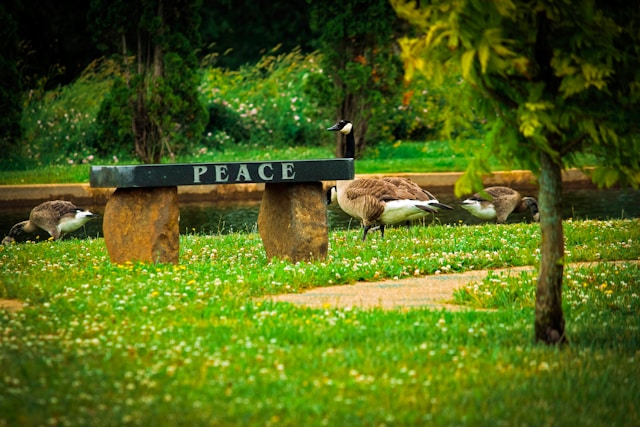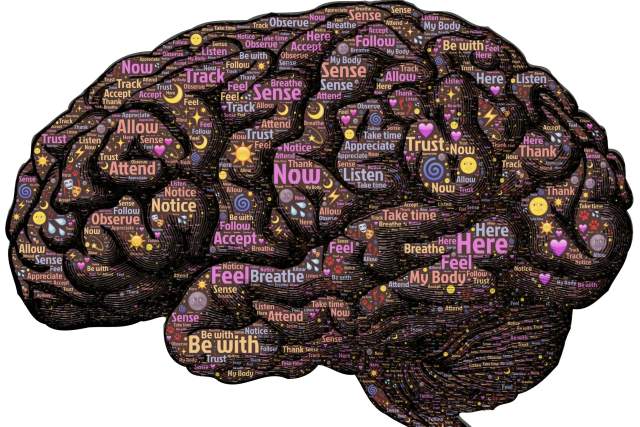In a world that just keeps picking up speed, finding even a few moments of calm or clarity can feel almost impossible. But here’s the thing: what if I told you that boosting your mental well-being isn’t about chasing some secret formula? Honestly, you’ve already got what you need inside you, sometimes it’s just about tapping into it with a few simple, meaningful practices. As we move through 2025, managing stress, anxiety, and that ever-present sense of overwhelm is more important than ever. That’s exactly where mindfulness comes in. It’s not just another buzzword, it’s actually a practical way to bring more balance and fulfillment into your life.

What Exactly Is Mindfulness?
So, let’s break it down. At its core, mindfulness is all about paying attention to what’s happening right now, on purpose and without judging yourself for whatever pops up. It means noticing your thoughts, feelings, body sensations, and everything around you instead of spiraling into worries about the past or the future. Think of it as gently reminding yourself to come back to “right now,” over and over again.

Now a days digital distractions are everywhere, social pressures are huge, and the world feels like it changes every five minutes. Our brains end up scattered, we’re multitasking nonstop, information never stops coming at us, and honestly, when was the last time you let yourself just be? All this mental clutter can really take a toll on our well-being. Mindfulness helps clear that clutter. Practicing mindfulness for mental health isn’t just a passing trend, it’s becoming an essential life skill. When we’re present even for a few minutes, we start to notice how we react to things, which helps us make better choices and find some peace in the chaos. The benefits go way beyond just “feeling good”, it actually lets us step out of autopilot mode so we can truly experience our lives.
Mindfulness Really Works And Science Backs It Up
You might be thinking: “Okay, but does this stuff actually work?” Totally fair question! The cool part is there’s tons of research showing how powerful mindfulness can be for both your brain and your body. For example, studies in journals like “Health Psychology” show that programs like Mindfulness-Based Stress Reduction (MBSR) can lower stress hormones (like cortisol) and help ease symptoms of anxiety and depression.

And get this, regular mindfulness practice doesn’t just change how you feel; it can literally reshape parts of your brain! Scientists have found that being mindful boosts attention control, helps regulate emotions better, and even increases gray matter in areas tied to memory, learning, self-awareness, and compassion. Basically: mindfulness gives you tools to handle life’s curveballs with more calm and focus. One huge benefit is emotional regulation, you start observing your feelings instead of getting swept away by them. That makes room for thoughtful responses instead of knee-jerk reactions.
10 Mindfulness Techniques That Can Seriously Change Your Life in 2025
Alright, ready to give this a shot? Here are ten super approachable ways to start practicing mindfulness right now. These activities don’t require any fancy gear or hours of free time, just a willingness to try something new.
Mindful Breathing
- How: Sit comfortably (eyes closed if you want) and focus on your breath, the feeling as air comes in through your nose and fills your lungs before leaving again. Don’t force anything; just notice it happening naturally. Your mind will wander (yep!), but gently guide it back each time.
- Why: This anchors you to the present moment, soothes your nerves, and honestly, it works anywhere.
Body Scan Meditation
- How: Lie down somewhere comfy. Start from your toes and slowly move awareness up through each part of your body until you reach the top of your head. Notice sensations like tightness or warmth but don’t judge them.
- Why: Fantastic for relaxation! Plus it helps you get tuned into what’s going on inside your body.
Mindful Walking
- How: Indoors or outside, doesn’t matter! Focus on how your feet hit the ground, how your legs move, the rhythm of each step. Take in sights or sounds without getting lost in thought.
- Why: Gentle movement plus mindful awareness = less tension and less anxiety.
Mindful Eating
- How: Before digging in, look at your food, the colors, shapes and breathe in its scent. Chew slowly; pay attention to taste and texture; maybe set down your fork between bites.
- Why: You’ll enjoy food more (really!) and may even notice when you’re full sooner.
Loving-Kindness Meditation
- How: Sit quietly; offer phrases like “May I be happy” or “May I be safe” first to yourself… then extend those wishes outwards to loved ones, acquaintances even people who challenge you.
- Why: This one really opens up compassion for others and yourself.
Mindful Observation
- How: Pick any object, a leaf outside or even something on your desk and study it closely as if seeing it for the first time.
- Why: Sharpens focus while also helping you appreciate small wonders around you.
Mindful Listening
- How: Just sit back for a moment and listen maybe traffic outside or birds chirping or practice during conversations by giving someone your undivided attention.
- Why: Builds better focus and way stronger connections with people around you.
Daily Mindful Journaling
- How: Spend a few minutes jotting down whatever thoughts or feelings pop up, no filter required! Notice how writing feels physically too.
- Why: Helps process emotions and track personal growth over time.
The 5-4-3-2-1 Grounding Technique
- How: Overwhelmed? Name 5 things you see; 4 things you can touch; 3 things you hear; 2 things you smell; 1 thing you taste (or remember).
- Why: Instantly brings attention back to now when anxiety tries to take over.
Mindful Task Completion
- How: Pick any routine task, washing dishes or brushing teeth and do it slowly while tuning into every sensation (temperature of water…smell of soap…movement).
- Why: Turns everyday moments into little pockets of calm presence.
How Do You Make Mindfulness Stick?
Here’s the secret: consistency matters way more than perfection! You don’t need an hour a day even five minutes counts if that’s what fits into your schedule right now. Try tying mindfulness to something else you do every day like mindful breathing before morning coffee or doing a quick body scan before bed (this one really helps with sleep!). Maybe add mindful walking during lunch breaks or turn one meal into mindful eating time each day.
Just remember, it isn’t about “doing it right,” but about gently showing up for yourself again tomorrow.

Facing Challenges? You’re Not Alone
Sticking with mindfulness can be tricky sometimes! Your mind will wander that’s totally normal and feelings like impatience or restlessness will pop up too (especially at first). Instead of judging yourself harshly when this happens, approach whatever shows up with curiosity or maybe even humor! Thoughts are just thoughts not facts set in stone and noticing them without getting sucked in is half the battle.
Pairing Mindfulness With CBT Can Be Powerful
By the way, if you’ve heard about Cognitive Behavioral Therapy (CBT), it’s worth knowing that CBT plus mindfulness is kind of a dream team for mental resilience! CBT helps spot unhelpful thought patterns; mindfulness gives space so those patterns don’t take over automatically, you notice them early enough to choose healthier responses instead.

The Long-Term Payoff
The more regularly you practice these techniques even if progress feels slow at times, the bigger the payoff over months and years ahead: steadier emotions, greater self-awareness, sharper focus, and honestly, a deeper sense of peace no matter what life throws at you next week or next year! People often find meditation rooted in mindfulness becomes one habit they never want to quit because it changes their relationship with their own mind (and with everyone around them).

Ready To Give Yourself This Gift?
Starting a mindfulness journey could be one of the most caring things you’ll ever do for yourself! These ten mindfulness techniques aren’t magic, they’re tools anyone can use anytime they need a reset or some clarity.
So, which one jumps out at you? Maybe pick one technique this week and see how it feels… Who knows? This could be the first step toward more calm days ahead, with lots more clarity thrown in too!
